A kind of plant like saxifrage (Saxifraga) is directly related to the family Saxifragaceae. It unites more than 400 species of herbaceous plants, among which most are perennials, and the rest are one or biennial. She prefers to grow in nature in places with a harsh climate. So, this plant can be found in the subarctic regions, in the Alps, in the east of Greenland, as well as in the western and eastern parts of the Himalayas. The saxifrage prefers to settle on stony embankments, in crevices of rocks, on masonry walls, and is also found in lowland meadows.
The roots are poorly developed due to the soil in the places where the plant prefers to grow. The root system is almost lobular, but there are few small roots. The foliage of almost all plant species of this genus is either located directly at the very surface of the soil, or collected in dense root rosettes. Her peduncles are long and solitary. They come out of the middle of the rosette, which consists of leaves. The racemose inflorescences are few-flowered. The flowers have 5 petals and are most often radially symmetrical. It blooms for a very long time, about 3 or 4 weeks.
Other characteristics of saxifrage differ significantly in different species. So, in height, the bush can reach both 2 centimeters and all 100 centimeters. Leaves are both petiolate and long-petiolate. Their edges are smooth or significantly cut. Flowers can be painted in different colors. They are also very small in size and nondescript in appearance, and there are also very large, showy flowers with a rich color. The petals are both narrow-lanceolate and rounded.
Saxifrage at home
Illumination
It can grow both in partial shade and in bright diffused lighting. Avoid direct sunlight. Otherwise, the leaves lose their juiciness, becoming lethargic, and the color fades. For placement in a room, it is recommended to select the windows located in the western or eastern part of the room. It is possible to grow on a north-facing window, but variegated forms in this case lose their spectacular color.
Temperature regime
During active growth, it needs a temperature of 20 to 25 degrees.In the event that it becomes very hot in the room, then the flower should be taken out into the street, for example, in the garden or on the balcony. In the absence of this opportunity, they try to ventilate the room as often as possible.
In winter, there is a dormant period, and the saxifrage at this time needs a temperature of 12 to 15 degrees.
How to water
Watering should be year-round, as the top layer of the substrate dries up. If the room is cold, then watering should be more scarce, since the evaporation of water in this case slows down. Stagnation of water in the soil should not be allowed in any case, as this negatively affects the roots, and can also contribute to the appearance of rot.
Watered exclusively with settled soft water, which should be at room temperature.
Moisturizing
Undemanding to air humidity and feels great in apartment conditions, but only if a cool wintering is provided. If the plant hibernates in the warmth, then it should be rearranged away from the heating devices and systematic spraying of the foliage should be carried out using soft lukewarm water. It is also necessary to spray on hot days in summer.
Earth mixture
Suitable soil should be low or medium nutritious, air and water permeable, with neutral acidity. Only the saxifrage cotyledon needs acidic soil. A suitable dredge for other species is very simple to compose. To do this, you need to mix 1 part of leafy soil and 2 parts of clay-sod land with ½ part of coarse sand. Also, you need to add a fourth or fifth of the total volume of small expanded clay or gravel to the resulting mixture.
For planting saxifrage you need low, wide pots. It is possible to plant several outlets in one container, since the roots are small and do not take up much space. Don't forget to have a good drainage layer to help prevent stagnation of liquid in the soil.
Top dressing
Reacts negatively to large amounts of fertilizers in the soil. It is recommended to feed only 1 time per season. To do this, use a universal fertilizer for indoor plants. It is undesirable to use fertilizers that contain nitrogen, as they provoke active foliage growth.
Transplant features
They are transplanted when necessary, as a rule, if the bush grows strongly and does not fit into the pot.
Reproduction methods
Can be propagated by seeds as well as by daughter rosettes. In this case, the sockets can be immediately planted in a permanent pot.
Pests and diseases
Can settle spider mite, mealybug, and thrips... In case of infection, treatment with insecticides (fitoverm, actellik) is recommended.
If you take care of the plant incorrectly, then a variety of rot can occur. So, for example, this can happen due to cold air with high humidity or as a result of overflow. If the root system decays, the remaining intact stem can be re-rooted. To do this, first it must be cleaned of rotten mass and treated with fungicides.
Video review
Main types
Most often, saxifrage is used for growing on rockeries, as well as alpine slides in the park and in the garden. However, there are small species that can be grown at home. So, these types include all of the following.
Wicker saxifrage (Saxifraga stolonifera)
It is also called the sprouting saxifrage (Saxifraga sarmentosa) - this species is the most popular and is often grown as an ampelous plant. In nature, it can be found in Japan, and also in China. This perennial plant has a dense leaf rosette. Leaflets are long-petiolate, slightly pubescent. The bush in diameter and also in height can reach from 20 to 50 centimeters. The leaf has a rounded shape, a heart-shaped base and a broad-crested edge.Its diameter is approximately 5–7 centimeters. The front side is dark green with prominent pale stripes of veins, and the back side is colored burgundy green. Peduncles, petioles, and also thin long shoots-stolons, which are air layers-"mustaches", are painted in the same color shade, on the tips of which there are small daughter rosettes. If the saxifrage grows like an ampelous plant, then its stolons can be from 60 to 100 centimeters long. It should be borne in mind that each individual daughter socket is capable of having its own stolons.
This plant blooms from May to August. Small flowers are of little decorative value, but they have a unique calyx that is completely asymmetrical. So, 3 small petals, located on top, are ovoid, and their tip is narrowed. They are painted pink, and also small burgundy spots are randomly located on their surface. Below there are 2 larger petals, painted white. They often vary in size.
This species has several varieties. Most Popular:
- Harvest Moon ("Harvest Moon") - the color of the leaves is pale, green-yellow.
- Tricolor ("Tricolor") - this variety is variegated, and on each leaf there is a rather wide whitish-pink edge.
Saxifrage cotyledon (Saxifraga cotyledon)
In nature, you can meet in the Alps. It is the most beautiful of all saxifrage species (both during flowering and at normal times). Its very dense leaf rosette is very similar to a succulent plant such as Echeveria. Thick green leaves are petiolate and have a ligulate or obovate shape. In length they reach almost 10 centimeters, and in width - about 2 centimeters. The finely serrated edges are covered with a whitish thick limescale, which is produced by the leaf itself. There is also a small limescale on the surface of the glossy leaf. Flowering begins in May or June. At this time, a lush, highly branched peduncle grows from the middle of the outlet, on which a bunch of pyramidal shape is held, which has a huge number of star-shaped flowers. In size, this bunch is larger than the leaf outlet itself, and several times. Its approximate dimensions are: length - 60 centimeters, and width - 40 centimeters. These flowers are painted in the correct star-shaped form in a pinkish-white color. However, now there are varieties with a different color of flowers.
Arends' saxifrage (Saxifraga arendsii)
This hybrid species is quite complex and has a large number of different varieties. Lobed, glossy leaves are deeply dissected and almost petiolate. They are collected in small leaf rosettes. Over time, the plant grows, resulting in the formation of very dense thickets, somewhat similar to moss. In this regard, this species received another name among the people, namely, "mossy saxifrage". On small-flowered inflorescences there are several flowers of a rather large size, which have the correct shape. The petals are wide-oval in shape and can be colored yellow, white, pinkish, as well as in different shades of purple and red. The color of the flowers depends on the variety.
This plant, which prefers to grow in areas with a rather harsh climate, does well in indoor conditions. However, for its successful cultivation, you still need to pay attention to some points.

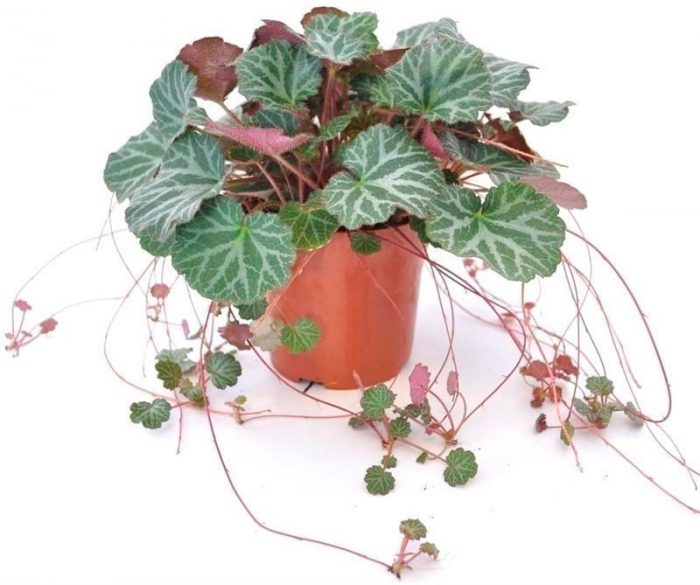
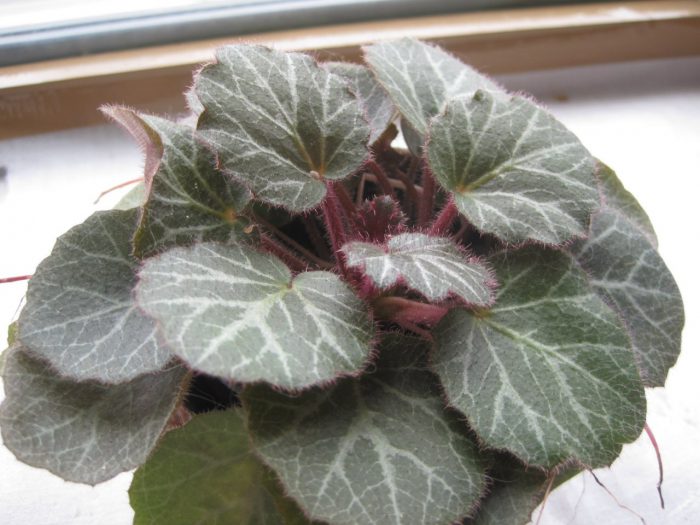
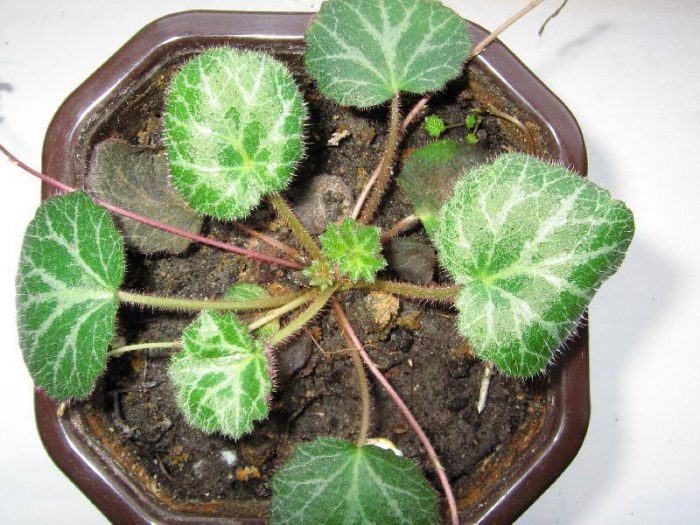


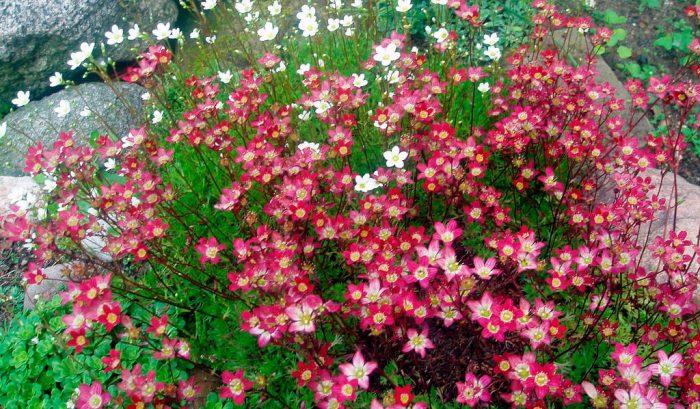


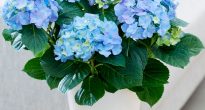




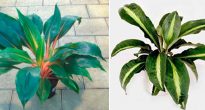


Today I went to the Flowers store on Kuibyshev to buy a saxifrage, saw a similar flower with the name of saxifrage, asked the shopkeeper if it was that flower, she said no and showed me a cactus, saying that a saxifrage is a succulent.Thinking, I bought this flower with an unknown name saxifrage, which turned out to be a saxifrage! What kind of workers are they working in a specialized store ?!